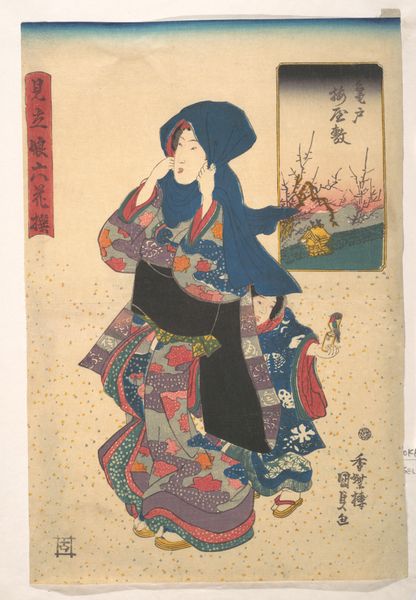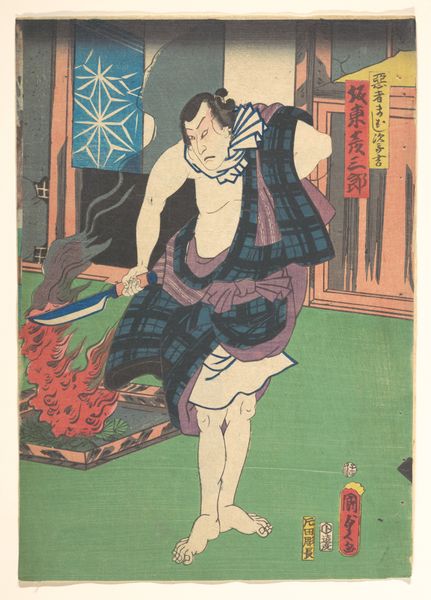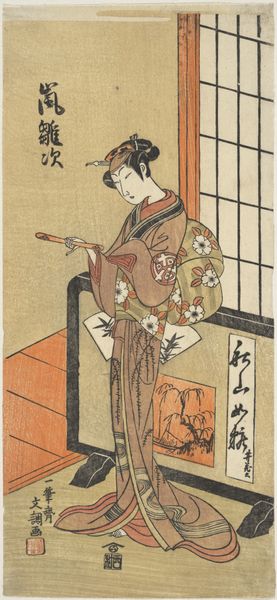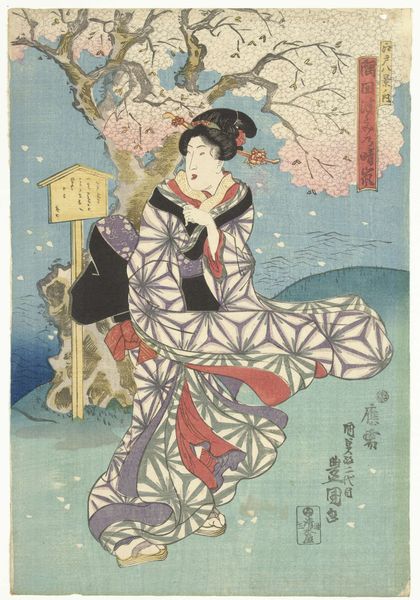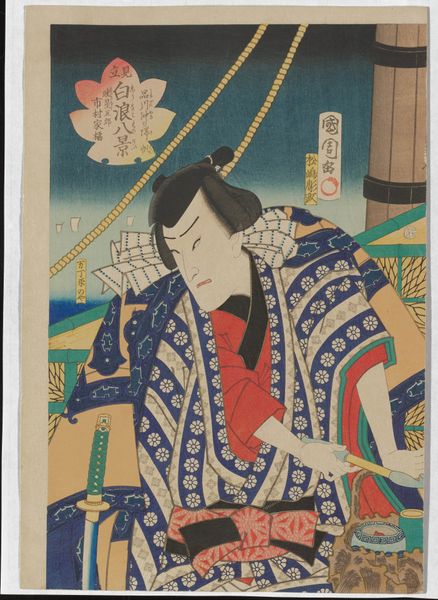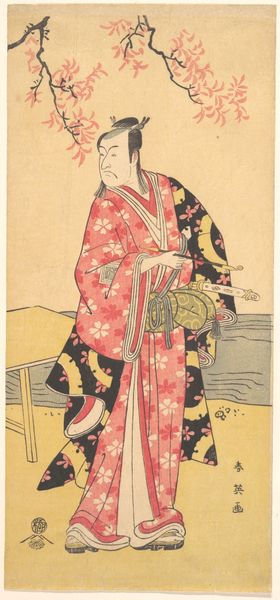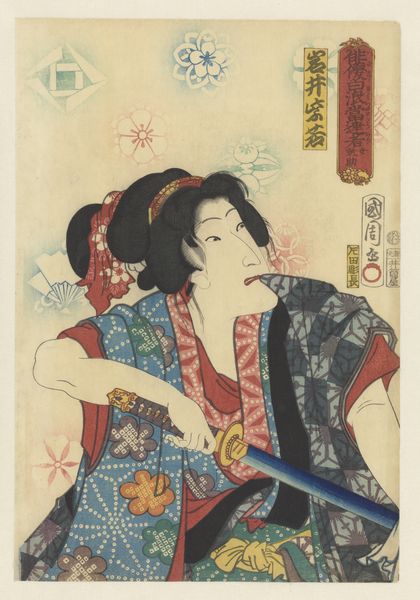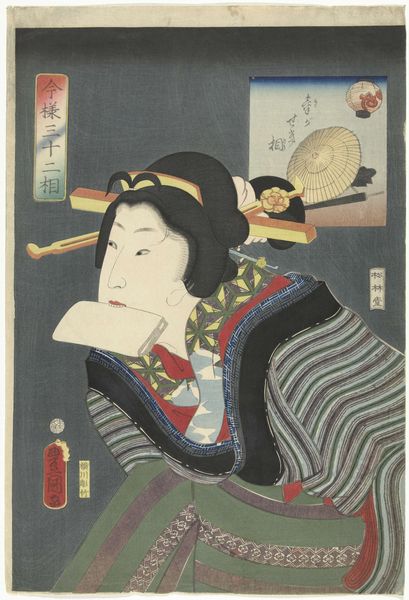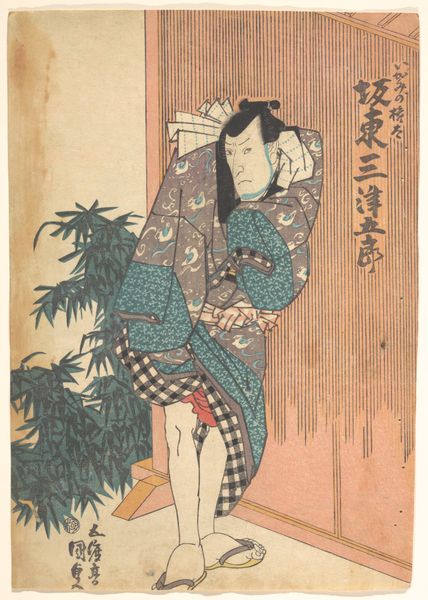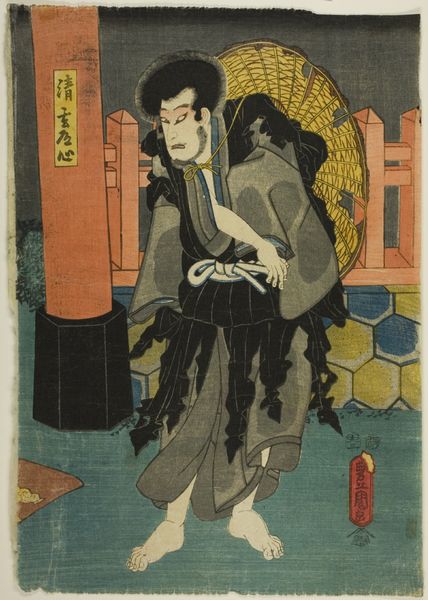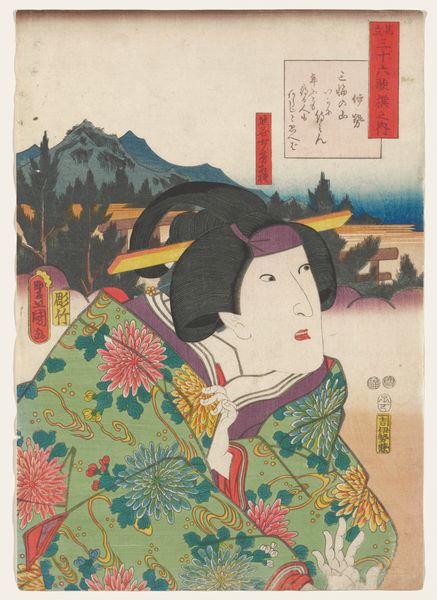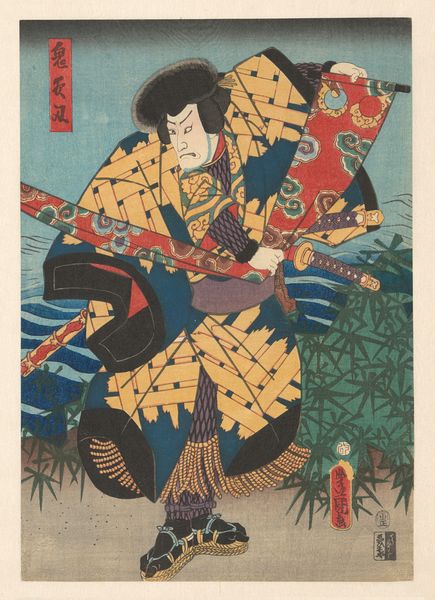
print, woodblock-print
#
portrait
# print
#
caricature
#
asian-art
#
caricature
#
ukiyo-e
#
woodblock-print
Dimensions: Image: 13 5/8 × 9 5/8 in. (34.6 × 24.4 cm)
Copyright: Public Domain
Editor: Here we have Utagawa Kunisada’s “Print,” a woodblock print from between 1800 and 1865. He sits perched uncomfortably and seems rather unhappy, judging by that blue teardrop painted on his cheek! What strikes you when you look at this work? Curator: Well, it's a *yakusha-e*, an actor print, but consider what’s not immediately apparent: those vibrant textiles draped about. Note how Kunisada meticulously renders their patterns. This level of detail signifies more than mere decoration. Think about cloth in that era—it’s wealth, status, and a carefully constructed persona, like a symbolic language. How might the choice and arrangement of these specific patterns affect our understanding of the actor's character? Editor: So, it's like costuming for the stage extending into everyday life... almost performative? The colors feel really deliberate, too. Curator: Precisely! Each motif has cultural roots. The *ichimatsu* check might signal stability or tradition, depending on the context. And see that determined gaze – is that a tear or some kind of war paint on the actor's face? Editor: I assumed a teardrop... tragedy, perhaps? Curator: Perhaps, but I’m thinking, consider the emotional intensity that defines *kabuki* theatre and how male actors portray women – *onnagata*. That blue tear could actually signify rage – almost a *mask* that emphasizes psychological struggle, or conflict! The choice and usage of symbolic language become very important here! Editor: I see... I was initially focused on his expression, but now I see how much those garments communicate beyond a surface level. Curator: Exactly. This is why iconography is about seeing beyond the surface – and understanding how symbols accumulate meaning over centuries. We project our own context and our own symbolism on existing imagery, sometimes getting it wrong! This process adds layers of richness and memory, however. Editor: That gives me a lot to consider. Thanks for opening my eyes to the layers of cultural symbolism in this piece.
Comments
No comments
Be the first to comment and join the conversation on the ultimate creative platform.
